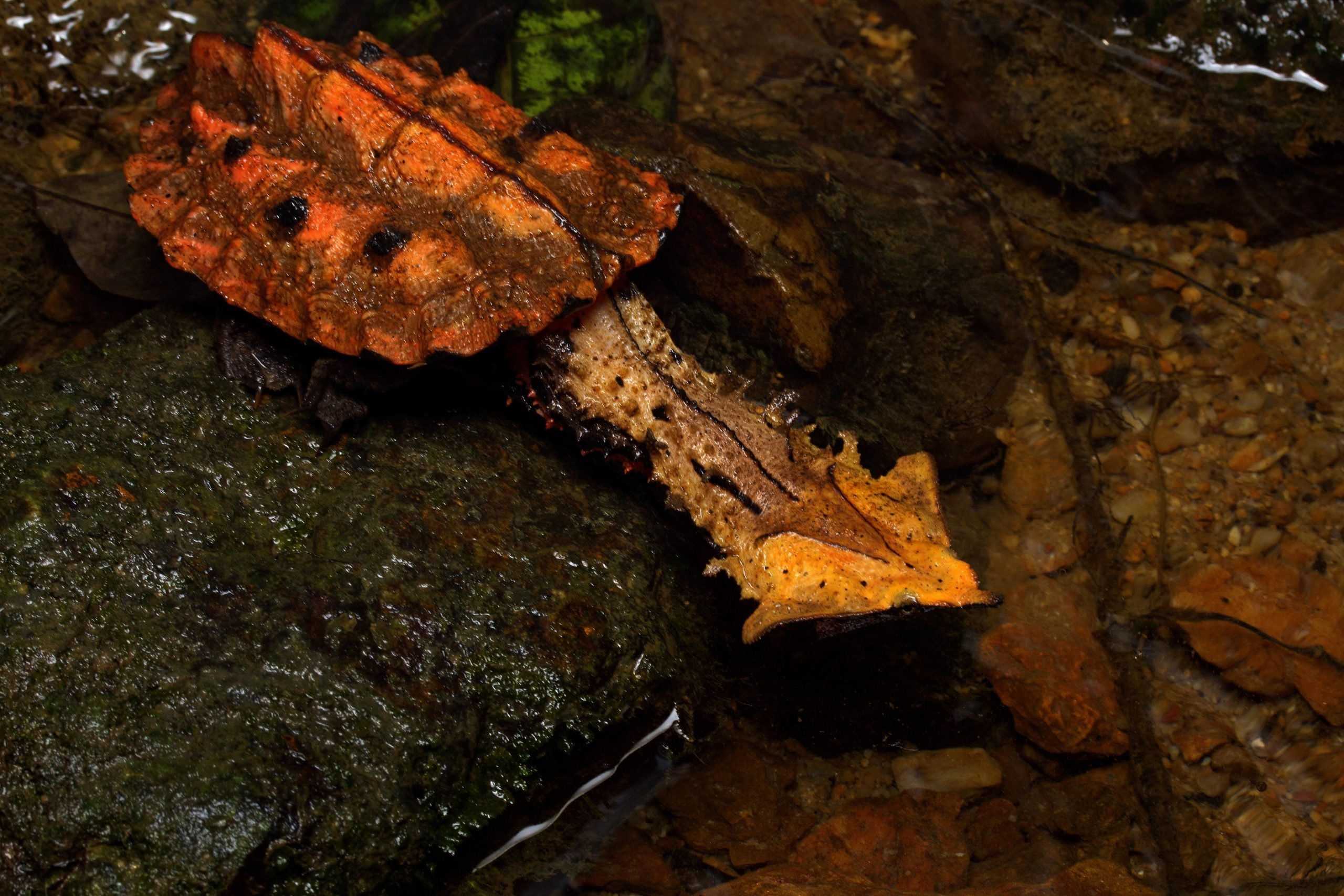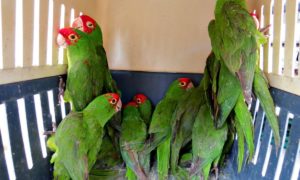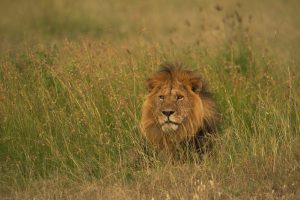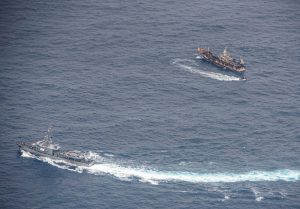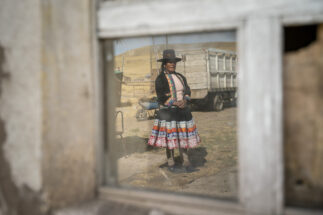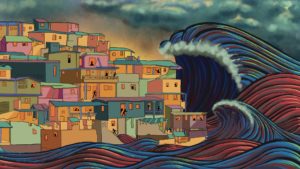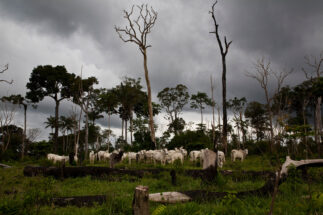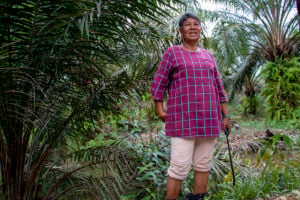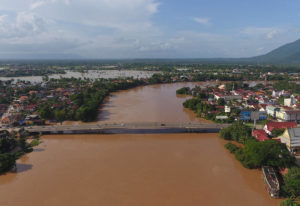In Madre de Dios, the biodiversity capital of the Peruvian Amazon and a hotbed of illegal wildlife trafficking, Magali Salinas has over the past 17 years rehabilitated and released hundreds of animals, including howler, capuchin and black-headed night monkeys, hawks, turtles and opossums.
“I have freed more than 50 howler monkeys. Seeing them running to freedom is priceless,” said Salinas, founder of the Amazon Shelter rescue centre. Every week, the shelter receives a range of injured animals, such as monkeys with burnt legs and parrots with broken wings, that have been seized by the authorities from trafficking networks.
102,000
The number of live wild animals seized by authorities in Peru in the last two decades, according to the National Forestry and Wild Fauna Service
In the last two decades, around 102,000 live wild animals have been seized in Peru, including nearly 44,000 amphibians and just under 46,000 birds, the country’s National Forestry and Wild Fauna Service (Serfor) reports. It is suspected that these animals were destined for private collectors, zoos and pet shops, as well as for use in the leather, fur and textile industries, among others.
The Covid-19 pandemic, and the strict restrictions imposed across Peru in response to it, have done little to stem the flow of wildlife crime in the country. “We received more animals than ever before, and I continue to receive them,” said Salinas, who has had to exceed the normal limit of 60 animals at the rescue centre in order to accommodate as many as 100 rescues at a time.
According to Peru’s authorities, illegal trafficking via the internet has intensified during the pandemic. Trade has been seen not only on the deep web, but also on social media and other more visible online platforms, with live reptiles and body parts of protected and even endangered species available. According to research by the Alliance for Wildlife and Forests, live turtles and their eggs – particularly the matamata turtle (Chelus fimbriata) – are the animals most frequently advertised for sale online.
Despite the frightening figures, Peru has in fact been taking a determined stance on wildlife trafficking in recent years, introducing a national strategy and tabling region-leading laws and initiatives to combat illegal trade. But experts point to many gaps remaining in enforcement and implementation, as authorities face the task of confronting sizeable organised crime operations and international networks.
Combatting a ceaseless crime
Patricia Torres, an expert with the Peruvian Society for Environmental Law (SPDA), told Diálogo Chino that the country has in recent years “taken a stand” against wildlife trafficking at home, and promoted processes to combat it at the wider Latin American level. However, Torres said, “instability is preventing there from being a solid implementation policy for what we want to do on wildlife trafficking.”
In 2017, Peru published its national strategy to reduce illegal wildlife trafficking, a plan covering the decade to 2027. This was followed in 2019 by the Lima Declaration on Illegal Wildlife Trade, a statement accepted by 20 countries and promoted by Peru to fight illegal activities across the region. The 21 measures it outlined were described as “quite ambitious” by Rosa Vento, a biologist and trafficking specialist with the Wildlife Conservation Society (WCS).
But according to Vento, “as it is basically a political commitment but not a binding normative one, it depends a lot on the willingness of countries to implement it.”
Instability prevents there from being a solid implementation policy for what we want to do on wildlife trafficking
In contrast, the Convention on International Trade in Endangered Species of Wild Fauna and Flora (CITES) is a legally binding international agreement that aims to ensure that illegal trafficking does not threaten the survival of wild animals and plant species. However, as CITES deals with international trade, it is the responsibility of each member state to tackle trade and trafficking of wildlife within its borders. In negotiations and meetings of CITES, Peru has put forward species threatened by international trade for inclusion under the agreement, Torres explained.
In 1975, Peru was one of the first countries to sign this agreement, which currently covers nearly 6,000 animal species and 32,800 plant species around the world, either regulating or banning international trade, according to the degree of protection they are deemed to need.
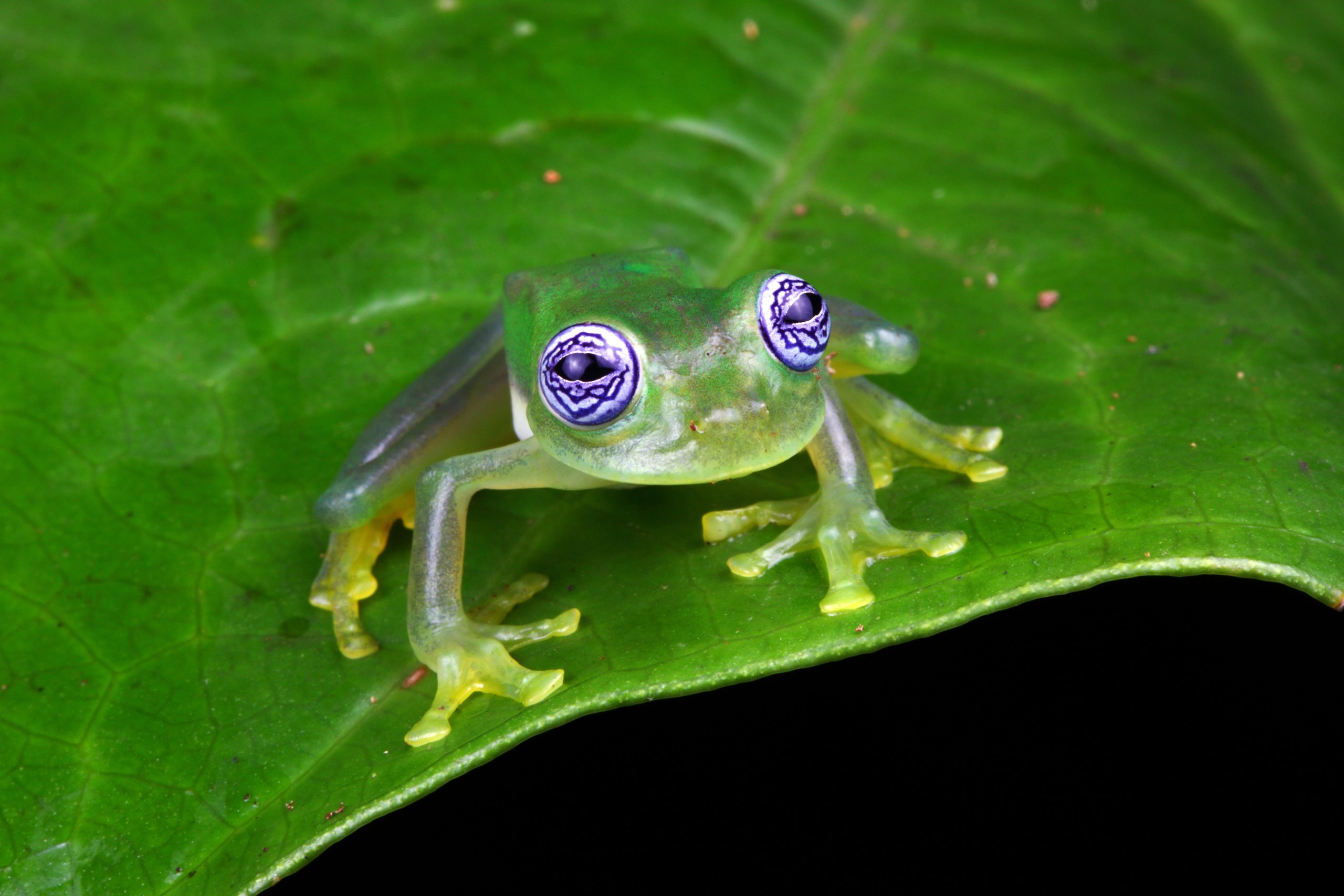
At the recent CITES summit on the global wildlife trade, which concluded in Panama last month, Peru brought two proposals for additions to the agreement’s Appendix II, the list intended for species that could become threatened by trade if it is not regulated. These were glass frogs (family Centrolenidae) and matamata turtles, which are traded abroad as exotic pets. The main destinations for the latter are China and the United States, which together account for 85% of exports since 2010, according to the proposal submitted by Peru, in collaboration with Brazil, Colombia and Costa Rica.
Both proposals were adopted by consensus, meaning that from 90 days after the meeting’s conclusion, permits will be required for these species to be traded internationally. Exports of CITES Appendix II species require permits that confirm the animals or plants were sourced both legally and sustainably, with the aim of ensuring trade does not threaten the species’ survival.
Criminal groups in the crosshairs
Although most trafficked wildlife is sold locally, it is estimated that around 20% of animals confiscated by the Peruvian authorities were destined for international destinations. According to InSight Crime and several investigations, China is by far the largest market for plants and animals smuggled out of Peru, followed by the United States.
The jaguar (Panthera onca) is one emblematic case. When this feline, an icon of the Americas, falls into the nets of traffickers, its parts – fangs, skin and bones – are sometimes sold as jewellery or amulets in China. Research published in the Conservation Biology journal warns that the illegal trade in the animal’s parts is on the rise and is likely to be linked to Chinese investments in Central and South America.
Behind the trafficking of jaguar parts are criminal organisations that sell jaguar fangs for up to US$3,000 in Asia. In 2021, Bolivian authorities arrested five jaguar traffickers said to be part of an international criminal network operating in Peru, Brazil and Vietnam.
As a result of this rising trade, over the past three years organisations in Peru had been campaigning for the illegal trafficking of wildlife to be defined as a crime under the country’s law against organised crime, approved by its congress in November.
This law puts Peru at the forefront of the fight against illegal trafficking in Latin America
After much back and forth, the campaign achieved its aim: the new law will now make it possible to investigate the criminal organisations behind the trafficking of terrestrial and aquatic animals and, more importantly, those found guilty will now receive sentences of between 11 and 20 years in prison, instead of the previous maximum of seven.
“This law puts [Peru] at the forefront of the fight against illegal trafficking in Latin America, at least in legal terms,” said Carmen Heck, policy director at conservation NGO Oceana. “Almost no country in the region has laws that allow us to prosecute these crimes like the organised crime that they are.”
Rosa Vento of WCS said that the amendment “will give more tools for the investigation [of these crimes], especially to justice operators at the stage of investigation, prosecution and punishment.” In this way, it will be possible to request the lifting of confidentiality on bank details, to use special investigative techniques such as undercover agents, and have more time for preparatory investigations and pre-trial detentions.
“Peru is positioning itself as a country in which criminal regulations are the strictest,” Vento told Diálogo Chino. She added that in Bolivia the senate has recently approved a similar bill to consider wildlife trafficking a crime, which she describes as a further “step forward”.
Aquatic species are contentious
The amendment to the law against organised crime also includes the trafficking of aquatic species, such as sharks and seahorses, which are the most affected by such crime. Peru is among the 15 countries that export the most shark fins to China, according to the United Nations’ Food and Agriculture Organization (FAO).
However, there are currently two bills being proposed to modify the law, and another to repeal it that has the support of the Ministry of Production and a sector of artisanal fishers. Some fishers worry this law could see them criminalised for bycatch, while others support it.

“This law is not designed to criminalise artisanal fishers, but organised crime for transnational trafficking,” Percy Grandez, a legal advisor from the SPDA, told a recent session of the Justice Commission of the country’s congress, which received a letter signed by more than 47,000 citizens requesting that the law be respected. “We propose that it be made very clear in the law that the application of the aggravating circumstance for incidental catches or catches outside the regulated sizes is exempted,” he added.
This issue is consistently controversial when efforts to protect aquatic species are made. Under Peruvian law, aquatic species are considered hydrobiological resources, which, according to Heck, are seen from “an exploitation approach and not as wild species that must be conserved and protected.”
“While terrestrial species have a series of protections, for example the Red List of Threatened Species [of the International Union for Conservation of Nature], there is nothing similar for aquatic species. There is a serious problem of illegal trafficking of shark parts that puts the sustainability of the resource at risk and also affects fishers,” said Heck, whose organisation, Oceana, was a key advocate in the campaign for the recent law change.
According to the expert, a large part of the fins that Peru exports come from sharks caught in Ecuador, a country that prohibits their deliberate fishing. A recent investigation by OjoPublico revealed that around 62% of the fins leaving Peru for Asian markets between 2020 and 2021 come from this neighbouring country. “In this chain, a series of irregularities have been detected, and the danger that transnational criminal organisations are behind it is clearer,” Heck said.
The recent CITES conference saw 56 shark species approved for protection from indiscriminate predation, with 88 votes in favour, 29 against and 17 abstentions. Peru was one of the countries that voted against. Though only 19 particularly threatened species were targeted by the proposal, as shark fins and meat are very difficult to identify, trade in whole taxonomic families of the animals will need to be regulated for these species to be effectively protected.
